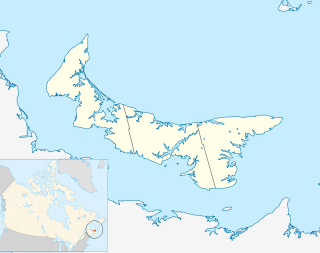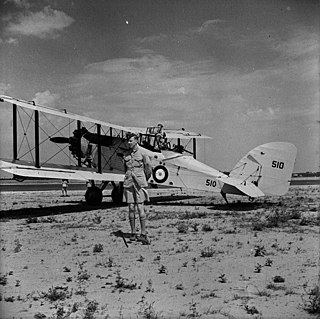Related Research Articles

The British Commonwealth Air Training Plan (BCATP), or Empire Air Training Scheme (EATS) often referred to as simply "The Plan", was a massive, joint military aircrew training program created by the United Kingdom, Canada, Australia and New Zealand, during the Second World War. BCATP remains as one of the single largest aviation training programs in history and was responsible for training nearly half the pilots, navigators, bomb aimers, air gunners, wireless operators and flight engineers who served with the Royal Air Force (RAF), Royal Navy Fleet Air Arm (FAA), Royal Australian Air Force (RAAF), Royal Canadian Air Force (RCAF) and Royal New Zealand Air Force (RNZAF) during the war.

The Bristol Fairchild Bolingbroke was a maritime patrol aircraft and trainer used by the Royal Canadian Air Force during the Second World War. Built by Fairchild-Canada, it was a license-built version of the Bristol Blenheim Mk IV bomber.

RCAF Station Saskatoon was a World War II British Commonwealth Air Training Plan (BCATP) base operated by the Royal Canadian Air Force (RCAF). It was located North of the City of Saskatoon, Saskatchewan, Canada.

RCAF Station Mount Pleasant was a Royal Canadian Air Force (RCAF) station in Mount Pleasant, Prince Edward Island, Canada. Two of its runways remain in use by members of the Experimental Aircraft Association.

RCAF Station Charlottetown was a Royal Canadian Air Force station located in Sherwood, Prince Edward Island. Today's Charlottetown Airport maintains a remnant of the airfield's runways near its general aviation terminal, however all buildings and most infrastructure have been removed.

Canadian Forces Base St. Hubert was a Canadian Forces Base in the city of Saint-Hubert, Quebec. The base began as a civilian airfield in the 1920s and was later also used by RCAF auxiliary (reserve) squadrons beginning in the mid 1930s. It became a fully-fledged RCAF station early in WW2 being extensively used for training as part of the British Commonwealth Air Training Plan. After the war, it grew into and remained for decades, one of the most important air bases in Canada.

RCAF Station Dafoe was a Second World War Royal Canadian Air Force station located near Dafoe, Saskatchewan, Canada. The station was home to the British Commonwealth Air Training Plan's No. 5 Bombing and Gunnery School. The school opened January 1941 and closed January 1945. Aircraft used include the Westland Lysander, Bristol Bolingbroke, Avro Anson, and Fairey Battle.

RCAF Station Fingal was a Second World War British Commonwealth Air Training Plan (BCATP) air station located near Fingal, Ontario, Canada. It was operated and administered by the Royal Canadian Air Force (RCAF).

No. 428 Squadron RCAF, also known as 428 Bomber Squadron, and 428 Ghost Squadron, was first a night bomber squadron in the Royal Canadian Air Force engaged in strategic bombing during World War II, as based in Yorkshire. At the end of the war the squadron moved to Nova Scotia before being disbanded in September 1945. In 1954 the squadron was reformed as 428 All-Weather (Fighter) Squadron, before being again disbanded in 1961.
Eastern Air Command was the part of the Royal Canadian Air Force's Home War Establishment responsible for air operations on the Atlantic coast of Canada during the Second World War. It played a critical role in anti-submarine operations in Canadian and Newfoundland waters during the Battle of the Atlantic. Eastern Air Command also had several fighter squadrons and operational training units under its umbrella.

Royal Canadian Air Force Station Jarvis was a Second World War British Commonwealth Air Training Plan (BCATP) station located near Jarvis, Ontario. The station was home to No. 1 Bombing and Gunnery School and is usually known by that name. Bombing and Gunnery schools trained Air Gunners, Wireless Air Gunners, Air Observers, Air Bombers, and Navigator-Bomb Aimers. These airmen served as aircrew on bombers and maritime patrol aircraft.
No. 1 General Reconnaissance School RCAF was a flight training unit in 3 Training Command, of the Royal Canadian Air Force, flying Avro Ansons from RCAF Station Summerside, PEI.
No. 2 Air Navigation School was a navigation training school in No. 3 Training Command RCAF, of the British Commonwealth Air Training Plan("BCATP"), flying Avro Anson's from RCAF Station Pennfield Ridge. It was opened on 21 July 1941 and closed on 30 April 1942. A second school with the same number opened at RCAF Station Charlottetown on 21 February 1944 and closed on 7 July 1945.
No. 32 Air Navigation School RAF was a flight training squadron in 3 Training Command, of the Royal Canadian Air Force flying Avro Anson's from RCAF Station Charlottetown, PEI.
No. 9 Service Flying Training School (SFTS), Royal Canadian Air Force was a flight training school, located at RCAF Station Summerside, PEI, and later, RCAF Station Centralia, Ontario. It was part of No. 3 Training Command RCAF, carrying out British Commonwealth Air Training Plan (BCATP) training operations.
No. 8 Service Flying Training School RCAF was a flight training squadron in 3 Training Command, of the British Commonwealth Air Training Plan (BCATP), flying Avro Ansons from RCAF Station Moncton, New Brunswick. The school was opened 23 December 1940. The school was relocated to RCAF Station Weyburn, Saskatchewan on 24 January 1944 and was disbanded 30 June 1944.
No. 2 Squadron was a Royal Canadian Air Force (RCAF) squadron active during the late 1930s. The squadron operated army cooperation aircraft from 1935, and upon the outbreak of World War II was selected for overseas duty. However, a shortage of aircraft forced its disbandment in late 1939 to reinforce two other squadrons.
No. 3 Training Command RCAF was a training command of the Royal Canadian Air Force during World War II established to administer the schools of the British Commonwealth Air Training Plan.

No. 3 (Bomber) Squadron was a Royal Canadian Air Force (RCAF) squadron active during the late 1930s.
References
Citations
- 1 2 RCAF Commands and their Units Retrieved 2013-01-10
- ↑ Hatch 1983, p. 203.
- ↑ Kostenuk & Griffin 1977, p. 230.
- ↑ Haliday, H., "Eastern Air Command: Air Force, Part 14" Royal Canadian Legion Magazine, March 1, 2006"
Bibliography
- Hatch, F. J. (1983). The Aerodrome of Democracy: Canada and the British Commonwealth Air Training Plan, 1939–1945 (PDF). Ottawa: Directorate of History, Department of National Defence. ISBN 0660114437.
- Kostenuk, Samuel; Griffin, John (1977). RCAF: Squadron Histories and Aircraft, 1924–1968. Canadian War Museum Historical Publication No. 14. Sarasota/Toronto: Samuel Stevens/Hakkert & Company. ISBN 0-88866-577-6.